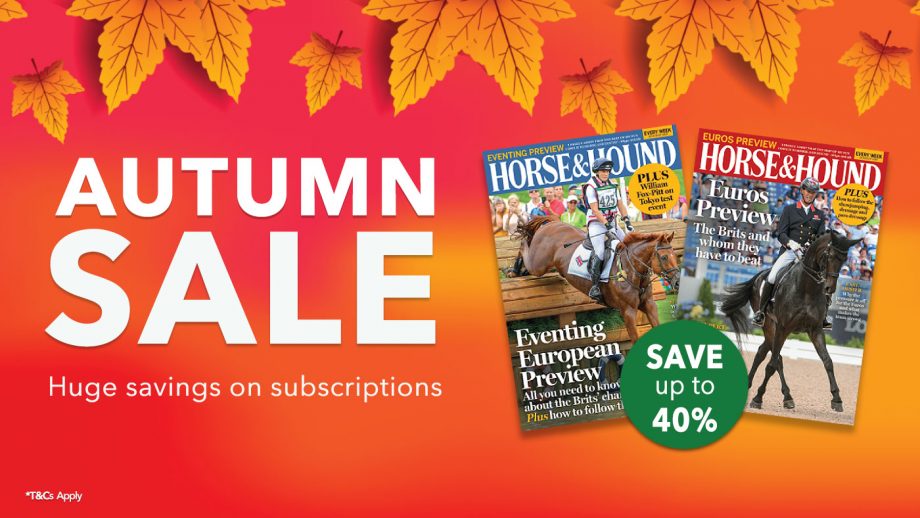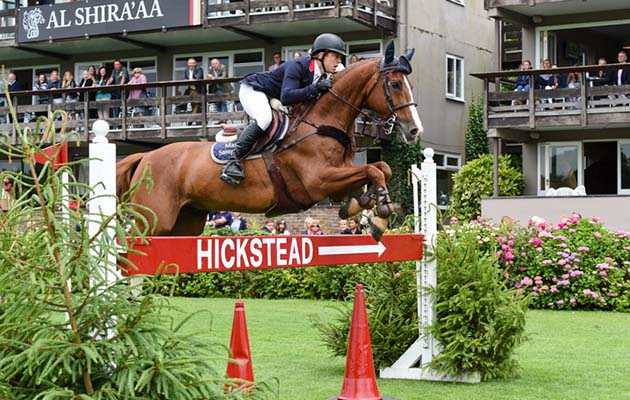
This week, the best six- and seven-year-olds in eventing from around the world converge on Le Lion d’Angers in France to fight it out for the prestigious young horse World Championship titles.
These championships often throw up serious horses to watch in the future, such as these previous winners…
The wonderful grey Darien Powers (above) was a winner at Le Lion in 1994 and went on to scale the heights of eventing with Australia’s Andrew Hoy. He won Olympic team gold medals in 1996 and 2000 and claimed the British open title in 1997 at Gatcombe.

Credit: Peter Nixon
Oslo won the six-year-old class at Le Lion in 2008 with William Fox-Pitt. The French-bred horse went on to claim a four-star (now five-star) title at Pau in 2011 when he was just nine, as well as winning the CCI3* (now CCI4*-L) at Tattersalls and the eight- and nine-year-old class at Blenheim in the same year.

Credit: www.trevor-meeks-photography.co.uk
Ingrid Klimke’s ride Sleep Late won at Le Lion in 1998. He went on to win an individual bronze medal at the 2005 European Championships at Blenheim and contest the Sydney 2000 and Athens 2004 Olympics for Germany. He was also a team gold medal winner at the 2006 World Equestrian Games (WEG) in Aachen.

Credit: Jon Stroud Media
FischerRocana FST took the six-year-old title at Le Lion in 2011 with Michael Jung. Since then, she has won the premier US event at Kentucky three times and been a team gold and individual silver medallist at the 2014 WEG in Caen, as well as taking individual silver at the 2017 European Championships in Strzegom.

Credit: TT News Agency/Press Association
The great grey Galan De Sauvagère is one of Le Lion’s greatest success stories. He won both the six- (2000) and seven-year-old (2001) classes with Nicolas Touzaint and went on to win the individual European gold medal twice, in 2003 at Punchestown and 2007 at Pratoni. He was also a team gold medallist at the 2004 Olympics in Athens.

Credit: PA Archive/PA Images
2000 was a vintage year for Le Lion. Not only did the six-year-old class launch Galan De Sauvagere’s career, but Primmore’s Pride won the seven-year-old class. With Pippa Funnell, he went on to win Kentucky, Badminton and Burghley — the only horse to achieve a career grand slam in the roads and tracks and steeplechase days — and take a team silver and individual bronze at the 2004 Olympics.

Credit: Alamy Stock Photo
Mister Pooh, the 2006 six-year-old Le Lion winner, was a perennial championship campaigner for Sweden with Niklas Lindbäck. He ran at the 2009 Fontainebleau Europeans, the 2010 WEG in Kentucky, the 2012 London Olympics and crowned his career with team silver at the 2013 Malmö Europeans. He was also fifth at Badminton 2011. It’s worth noting, too, that the runner-up to him at Le Lion was none other than the double Olympic champion La Biosthetique-Sam FBW, who was also second in the seven-year-old championship a year later.

Credit: Peter Nixon
Sara Algotsson-Ostholt’s Mrs Medicott — later renamed Reality 39 — took Le Lion’s six-year-old class in 2010. She too was a great championship horse for Sweden, with team silvers at the Europeans at Malmo (2013) and Strzegom (2017) and runs at the Blair European Championships in 2015 and the Rio Olympics in 2016.
Article continues below…
You might also be interested in:

Meet the 10 previous winners of Blenheim’s 8/9yo class — where are they now?
Here, we take a look back at the nine previous winners, what they went on to do and where they

Vote now! Finalists revealed in 2019 Horse & Hound Awards
‘Your votes really do mean a lot to all those mentioned in our pages this week, and to the winners

Credit: TI Media
<a href="https://www.horseandhound.co.uk/news/horse-hound-subscription-offer-651358" rel="bookmark" name="*Autumn sale* Save 40% on Horse & Hound subscriptions”>*Autumn sale* Save 40% on Horse & Hound subscriptions
Take advantage of our sale on Horse & Hound magazine subscriptions today

Credit: Phil Mingo
France’s Nicolas Touzaint piloted Hildago De L’Ile to take the seven-year-old title at Le Lion in 2002. The pair went on to win the first Pau CCI4* (now CCI5*) in 2007 and Badminton 2008. He collected team silver at the Blenheim Europeans in 2005 and contested the 2006 WEG and the 2012 Olympics.
Full report from this year’s Le Lion in next week’s Horse & Hound magazine (dated 24 October).



















 Harry Charles riding Doulita
Harry Charles riding Doulita

 Thanks to her fantastic coach Ryan O’Sullivan he has hard job slowing her down
Thanks to her fantastic coach Ryan O’Sullivan he has hard job slowing her down 



















